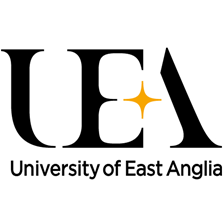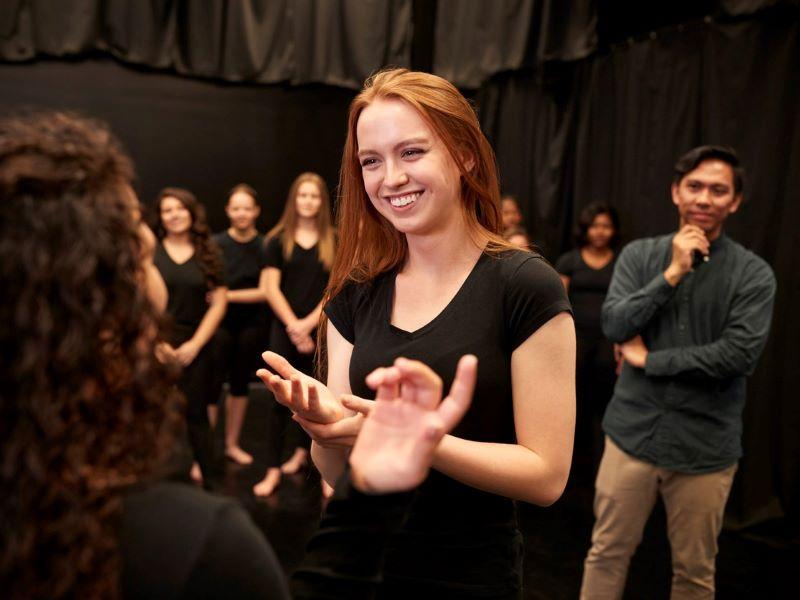
Break the ice early to build student belonging
Establishing strong, early connections with peers and staff is central to students feeling that they belong at university. When students feel part of a community and have positive relationships with their peers, they are more likely to remain and succeed at university.
In the School of Biological Sciences at the University of East Anglia, we are keen to facilitate students to socialise with others on their courses and form supportive communities from their first day. So, we have drawn on the expertise of performing arts facilitators to provide a series of interactive play-based activities with students studying on biological sciences courses. The feedback from the students has been overwhelmingly positive. Here are some ideas for how you can use this playful approach to build a sense of belonging among your own students.
Early in induction week we timetable a session for all students to attend and give the session an intentionally vague name. With this approach we hope that some, who might choose not to attend if they knew they would be talking and working with strangers for two hours, will attend out of curiosity and a fear of missing out.
- Resource collection: Collaborative learning in the digital space
- Building student social networks offline
- Resource collection: Looking after well-being in higher education
When running these sessions with a student cohort, we keep the introductions brief. Session facilitators introduce themselves and the session very briefly, then move swiftly on to the first activity. The most effective initial ice breaker is often one that requires very limited (or no) verbal communication and a strong element of play. Many students already feel well out of their comfort zone as it is very early in their course and they are in an unfamiliar physical space with unfamiliar people. Here are some of the most effective starter activities that we have used to break the ice and help students start to build early connections with their peers.
- Grandmother’s footsteps. This game is widely known in playgrounds across the UK and is likely to be familiar to many students, potentially even sparking nostalgia and memories of childhood play. It can be an excellent activity to set a playful tone for sessions with variations including teams of students to enhance the teamwork and belonging elements. Watch an example of this in action here.
- Catch. All participants stand in a circle and pass the ball so that everyone receives and passes on the ball just once before returning the ball to the first person. After the first run of this, ask the students to repeat it using the same sequence of people catching and passing on the ball. On the third run, repeat this with the sequence being reversed. And then try it with everyone being allowed to move around the space while trying to keep the correct sequence. This activity is so effective because on the first run, individuals playing focus on the ball but from the second run onwards, focus shifts to the people involved and recalling the sequence based on the person who receives the ball next. And if the ball is dropped, just pick the ball up and carry on – as long as the ball ends up back with the person who started with it, the objective has been met and the task has been a success.
- Paper air show. Offer each student one sheet of paper and an array of art materials and give a time limit of five minutes. Ask each student to design, decorate and create their own paper aeroplane. When the time is up, ask the students to form groups of four students each and give them five minutes but this time they have to decide which of the four planes they will put forward as the group entry. They can choose one entry for artistic flair (the art award) and one for flying ability (the engineering award) – students can run test flights during this time but rarely think of this without prompting. When the time is up, begin the air show. After all groups have flown their entries, ask the groups if they would like to revise their entries for a second and final round. Allow all groups to enter a plane in to the second air show and see how the atmosphere within the room changes upon being given that second chance. This is often an excellent opportunity to begin a discussion about failure, improving as you go and progressing through stages of their degree.
There are many other icebreaker-style activities which can be used and adapted to fit specific cohorts including activities involving blocks or other STEM-based challenges such as building towers out of newspaper and other materials. This “junk modelling” approach can work for other engineering challenges such as building a bridge to span a gap or to support a specific item or even person.
Providing students with time and space to engage in playful team-based tasks involving both students and staff, early in their course, can help lay the building blocks for important peer support networks, for supportive campus communities and to foster a sense of belonging.
Kelly Edmunds is an associate professor at the University of East Anglia. Leanne Fridd is founder of Bookbugs and Dragon Tales in Norwich. Prior to this she spent 17 years as a performing arts lecturer at City College in Norwich.
If you would like advice and insight from academics and university staff delivered direct to your inbox each week, sign up for the THE Campus newsletter.




